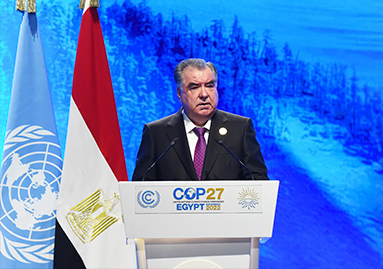In a statement delivered at the Conference of the Parties to the UN Framework Convention on Climate Change (UNFCCC) in Sharm al-Sheikh, Egypt, Tajik President yesterday noted that Tajikistan plans to increase its share in the implementation of the Zero Emission Strategy by 2050 through development of “green energy”, according to the Tajik president’s official website.
The Zero Emission Tokyo Strategy is a Climate Action Plan that aims to achieve net zero CO2 emissions by 2050. Published in December 2019, the strategy summarizes Tokyo's vision for realizing this goal, as well as tangible measures and roadmaps.
Tajik leader noted that the Government of Tajikistan had also adopted the National Strategy of Adaption to Climate Change for the period up to 2030 and a number of other documents.
“The share of the country in a total greenhouse gas (GHG) emissions is insignificant and Tajikistan is on the 130th place in terms of GHG emissions, that is it is among the leading countries for the low level of such emissions,” Rahmon said.
He further noted that more than 98 percent of electricity in Tajikistan is generated from renewable sources of “green energy”, especially, through hydropower, and according to this indicator, the country ranks sixth in the world.
Tajik president also said that water resources play a key role in the process of adaptation to climate change and sustainability as well mitigation of the level of its effects.
“Increase in the number of water-related natural disasters confirms the close relationship between water and climate change. Water resources today are under serious pressure of climate change. The striking example of this phenomenon we see in intensive melting of glaciers at the global level, including glaciers of Tajikistan, which make up to 60 percent of Central Asia’s water resources,” he said.
In this regard, Tajik leader proposed to declare 2025 the International Year for Preservation of Glaciers in the framework of the Water Alliance.




